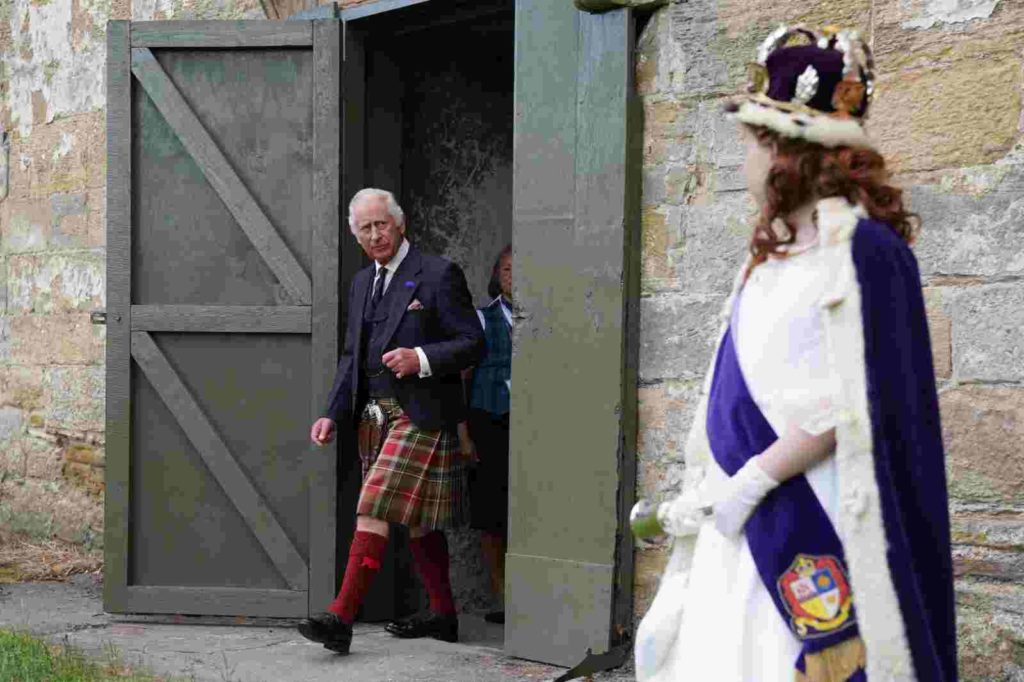Two months following the grand coronation of King Charles III in London, Scotland prepares to host its own event to honour the new monarch’s ascension to the throne. While a second coronation will not take place, Scotland’s celebration will feature a range of festivities showcasing its distinctive connection with the monarchy.
The event’s focal point is a service of thanksgiving at St. Giles’ Cathedral, where King Charles will receive the Scottish Honors. The crown, sceptre, and sword of state were previously used in the coronation of Scotland’s rulers. Additionally, the revered Stone of Destiny, a symbol of Scottish identity, will be temporarily relocated to the cathedral for the occasion.
These esteemed icons serve as a gesture of respect toward a nation fiercely proud of its history. Despite its historical union with England and the United Kingdom since 1707. Led by the Scottish National Party, Scotland’s national government has been advocating for a second independence referendum.
“It’s not a coronation,” explains George Gross, an expert in coronations at King’s College London. “But it’s very symbolic in that Scotland has its own identity.”
Strengthening Ties: King Charles’ Efforts to Unite the United Kingdom
The events taking place in Scotland capital on Wednesday are part of King Charles’ ongoing efforts to strengthen ties with the four nations comprising the United Kingdom. Through these endeavours, he aims to demonstrate that the thousand-year-old monarchy remains relevant in modern Britain. Shortly after the passing of his mother, Queen Elizabeth II. Last September, Charles embarked on visits to Northern Ireland, Scotland, and Wales before attending the state funeral in London.
Similar to the multicultural essence showcased during May’s coronation ceremony, Wednesday’s church service will incorporate a Gaelic psalm. King Charles will also be presented with a new sword crafted by Scottish artisans, named after Queen Elizabeth. This sword will replace the fragile existing sword of state, dating back to 1507, which cannot be used during the ceremony.
However, amidst the festivities, some Scots will not be joining in the celebrations, as the UK grapples with a cost-of-living crisis driven by soaring food and energy prices.
Our Republic, a group advocating for an elected head of state in Scotland, has organized a protest rally outside the Scottish Parliament to coincide with the coronation events.
“The majority of Scotland did not care to celebrate the coronation in May. Support for the monarchy in Scotland is at an all-time low,” stated the group in a released statement. “Charles’ persistent need to celebrate his reign, with all the grandeur it entails. It is an insult to those struggling with the cost of living.”
The People’s Procession: A Grand Display of Unity
The coronation festivities will commence in the early afternoon with the People’s Procession. Which will traverse the Royal Mile from Edinburgh Castle to St. Giles’ Cathedral. More than 100 representatives from charities and public service groups, including the Scottish Ambulance Service. The Royal Scottish Highland Games Association, and the Girls’ Brigade, will participate in the procession.
Escorted by police and military units, the Scottish Honors will follow behind. Subsequently, the Household Cavalry Mounted Regiments and various military bands will set off from the Palace of Holyroodhouse, the official residence of the king in Edinburgh. King Charles and Queen Camilla will then depart from the palace.
The one-hour service of Thanksgiving is scheduled to commence at 2:15 p.m. (13:15 GMT). Followed by a 21-gun salute and a flyover by the Red Arrows, the aerobatic display team of the Royal Air Force.
This festive occasion presents an opportunity for royal enthusiasts to celebrate King Charles’ ascension while paying homage to Scotland’s rich and distinct history. Historically an independent country, Scotland became united with England in 1603 following the death of Queen Elizabeth I. As she had no children, the crown passed to her cousin James VI, who was already the King of Scotland. Thus uniting the two nations under a shared sovereign. However, Scotland retained its independence until 1707 when both countries approved the Act of Union, forming the UK.
